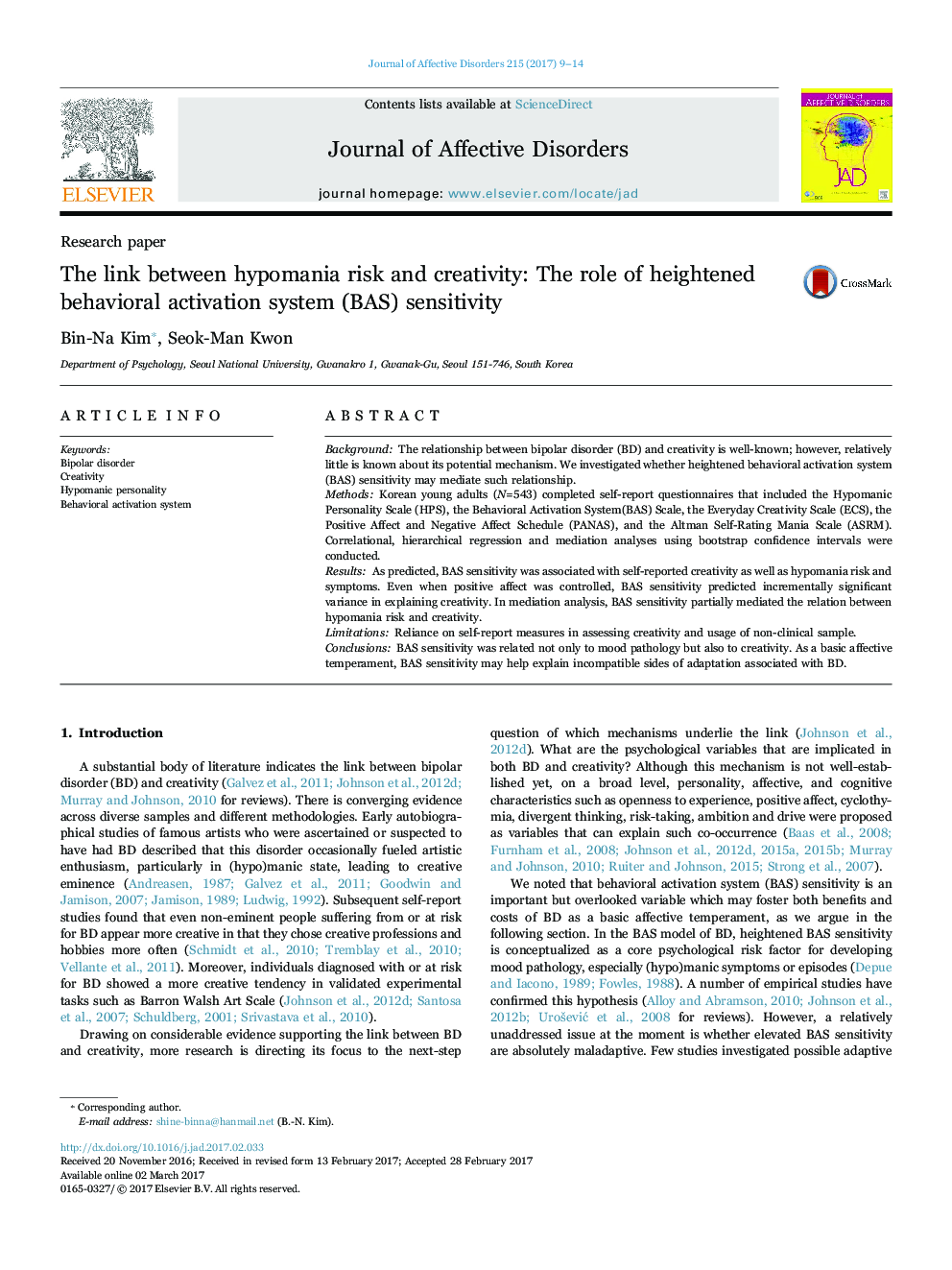| Article ID | Journal | Published Year | Pages | File Type |
|---|---|---|---|---|
| 5722320 | Journal of Affective Disorders | 2017 | 6 Pages |
â¢BAS sensitivity was associated with hypomania risk and symptoms.â¢BAS sensitivity was also associated with creativity.â¢BAS sensitivity mediated the relation between hypomania risk and creativity.
BackgroundThe relationship between bipolar disorder (BD) and creativity is well-known; however, relatively little is known about its potential mechanism. We investigated whether heightened behavioral activation system (BAS) sensitivity may mediate such relationship.MethodsKorean young adults (N=543) completed self-report questionnaires that included the Hypomanic Personality Scale (HPS), the Behavioral Activation System(BAS) Scale, the Everyday Creativity Scale (ECS), the Positive Affect and Negative Affect Schedule (PANAS), and the Altman Self-Rating Mania Scale (ASRM). Correlational, hierarchical regression and mediation analyses using bootstrap confidence intervals were conducted.ResultsAs predicted, BAS sensitivity was associated with self-reported creativity as well as hypomania risk and symptoms. Even when positive affect was controlled, BAS sensitivity predicted incrementally significant variance in explaining creativity. In mediation analysis, BAS sensitivity partially mediated the relation between hypomania risk and creativity.LimitationsReliance on self-report measures in assessing creativity and usage of non-clinical sample.ConclusionsBAS sensitivity was related not only to mood pathology but also to creativity. As a basic affective temperament, BAS sensitivity may help explain incompatible sides of adaptation associated with BD.
